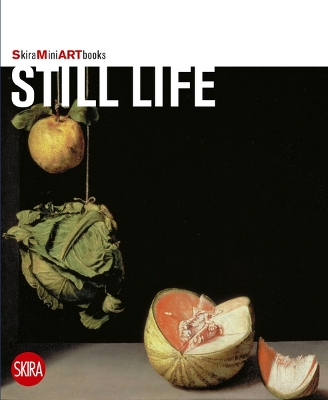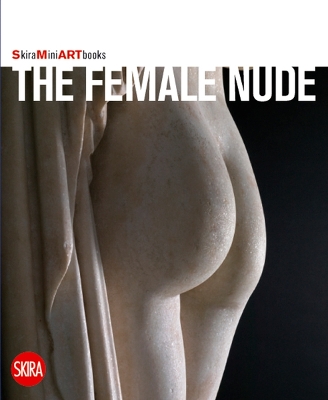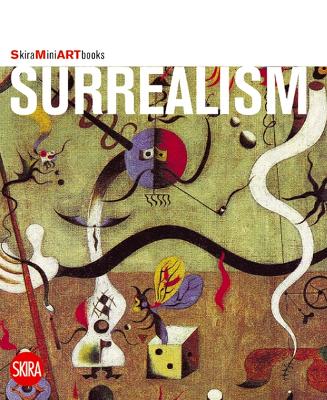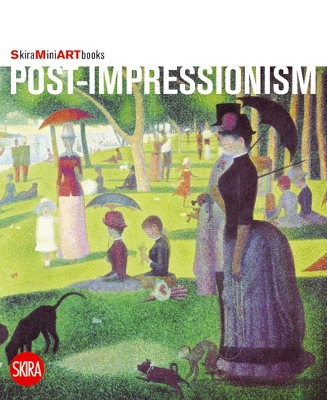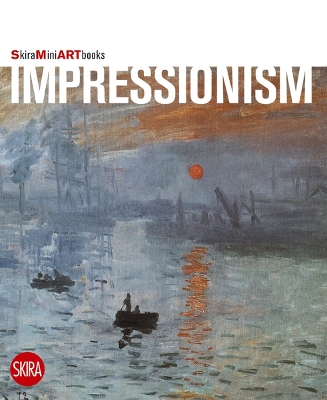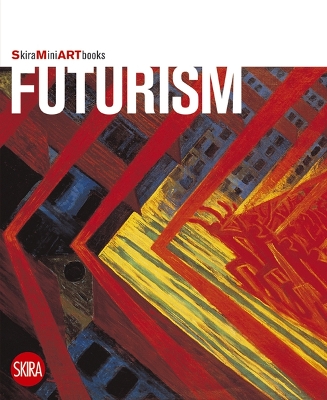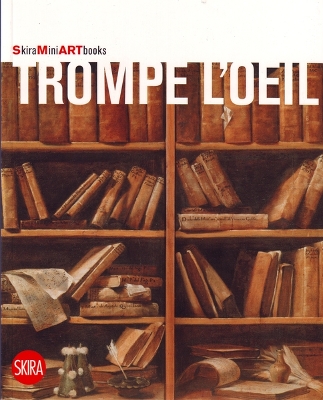Skira Mini Art Books
7 total works
Among the pictorial genres, “still life”, which depicts in detail the common objects of domestic life (fruit, vegetables, food, but also animals and tableware), holds an important place. It is an art form which gives us valuable insights into changes of mentality and philosophy. Each still life is emblematic of a specific time and place and of a certain metaphysical perspective. This condensed, well-priced overview of the genre features some sixty works from antiquity to the present and analyzes the history and significance of each.
The theme of the female nude has always exercised a particular fascination on artists and viewers alike, and the representation of the female body has inspired some of the finest works in art history. One of the most challenging and stimulating subjects in the entire artistic tradition, the female nude did not lose its allure even in the period in which art began to move in a different direction to that of the imitation of reality. In fact it showed an unexpected versatility and an undimmed power of suggestion even at the moments of greatest conflict with any traditional hypothesis of figuration, as at the time when nonrepresentational art reigned supreme. This volume, which aims to offer a fascinating visual survey of the nude, features nearly 50 paintings and sculptures-often celebrated masterpieces-spanning from classic to contemporary art.
Surrealism is an art movement, dedicated to expressing the imagination as revealed in dreams, free of the conscious control of reason and convention. Surrealism inherited its anti-rationalist sensibility from Dada, but was lighter in spirit than that movement. Like Dada, it was shaped by emerging theories on our perception of reality, the most obvious influence being Freud’s model of the subconscious. Founded in Paris in 1924 by André Breton with his Manifesto of Surrealism, it was above all a revolutionary movement and its principal aim was “to resolve the previously contradictory conditions of dream and reality into an absolute reality, a super-reality”. The Surrealist circle was made up of many of the great artists of the 20th century, including Jean Arp, Max Ernst, Giorgio de Chirico, Man Ray, Joan Miró, René Magritte, Yves Tanguy, Salvador Dalí.
Post-Impressionism is a movement in France that represented both an extension of Impressionism and a rejection of that style’s inherent limitations. The term Post-Impressionism was coined by the English art critic Roger Fry for the work of such late 19th-century painters as Paul Cézanne, Georges Seurat, Paul Gauguin, Vincent van Gogh, Henri de Toulouse-Lautrec, and others. Most of these painters began as Impressionists; each of them abandoned the style, however, to form his own highly personal art. Impressionism was based, in its strictest sense, on the objective recording of nature in terms of the fugitive effects of colour and light. The Post-Impressionists rejected this limited aim in favour of more ambitious expression, admitting their debt, however, to the pure, brilliant colours of Impressionism, its freedom from traditional subject matter, and its technique of defining form with short brushstrokes of broken colour. The work of these painters formed a basis for several contemporary trends and for early 20th-century modernism.
The myth of modernity told through the works of Balla, Depero, Boccioni and Prampolini. Paris, 20 February 1909. An article by the young Italian poet Filippo Tommaso Marinetti appears on the first page of the daily Le Figaro. It is the “Manifesto of Futurism”, the artistic movement established in Milan in 1909 that expressed concepts of movement and speed through simultaneous visions and dynamic lines. Marinetti intends to challenge the Paris avant-garde not by proposing a new way of making art and literature but a new way of living that interprets in an allembracing way the new collective myth of modernity.
Trompe-l'oeil, a French term meaning to trick, the eye, describes a painting that deceives the spectator into thinking that the objects in it are real, not merely represented. To successfully fool the eye of the viewer, trompe-l'oeil artists choose objects, situations and compositional devices using as little depth as possible. A heightened form of illusionism, the art of trompe-l'oeil flourished from the Renaissance onward. The discovery of perspective in fifteenth-century Italy and advancements in the science of optics in the seventeenth-century Netherlands enabled artists to render objects and spaces with eye-fooling exactitude. Both witty and serious, trompe-l'oeil is a game artists play with spectators to raise questions about the nature of art and perception.
